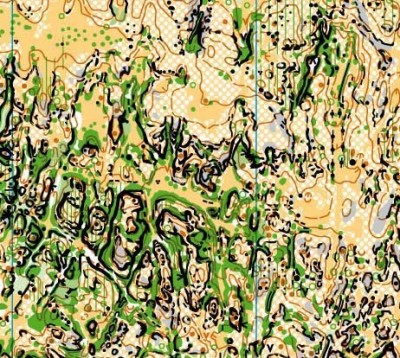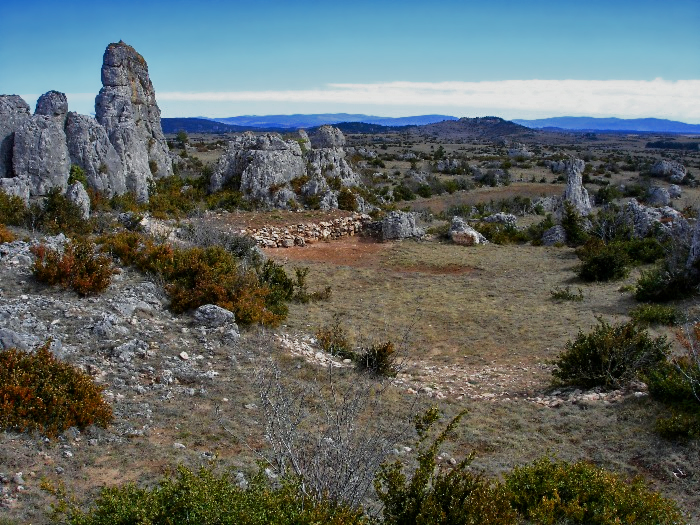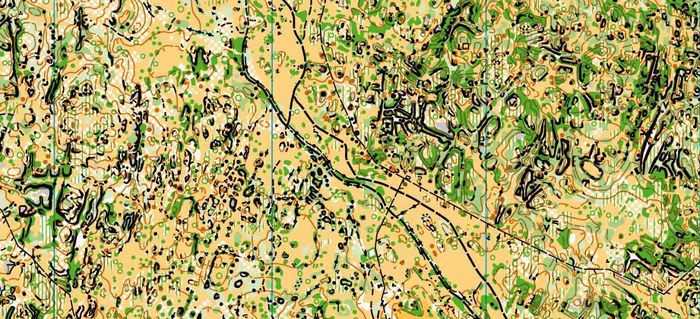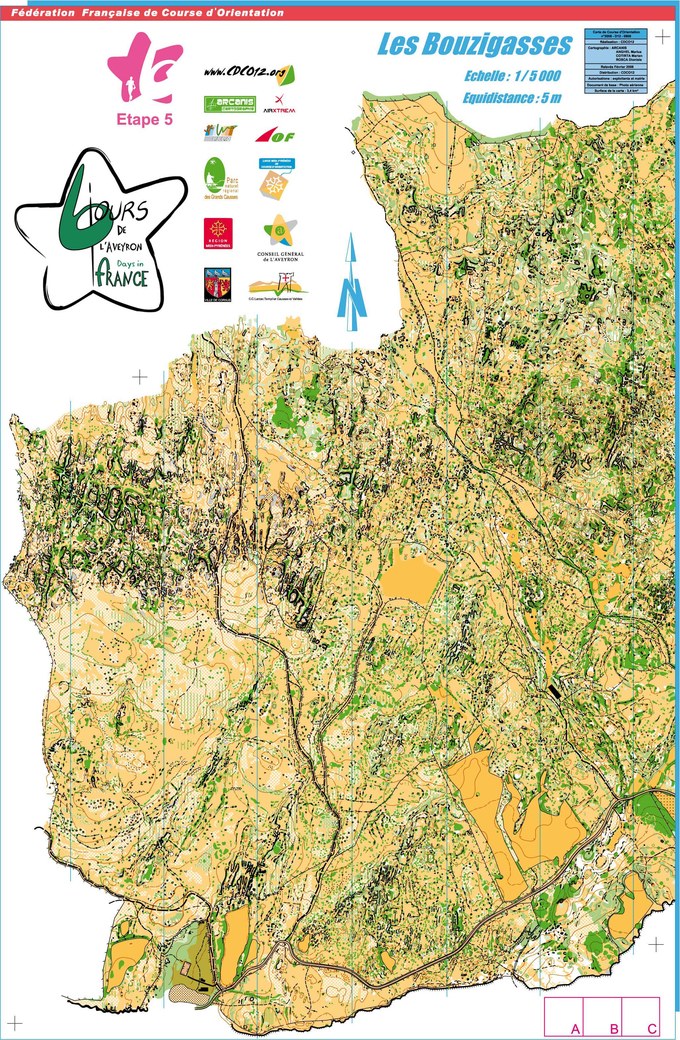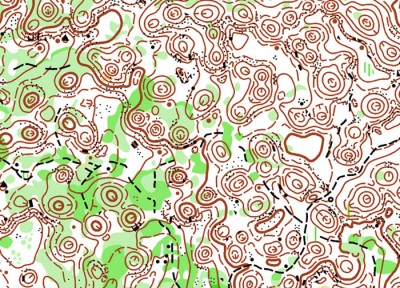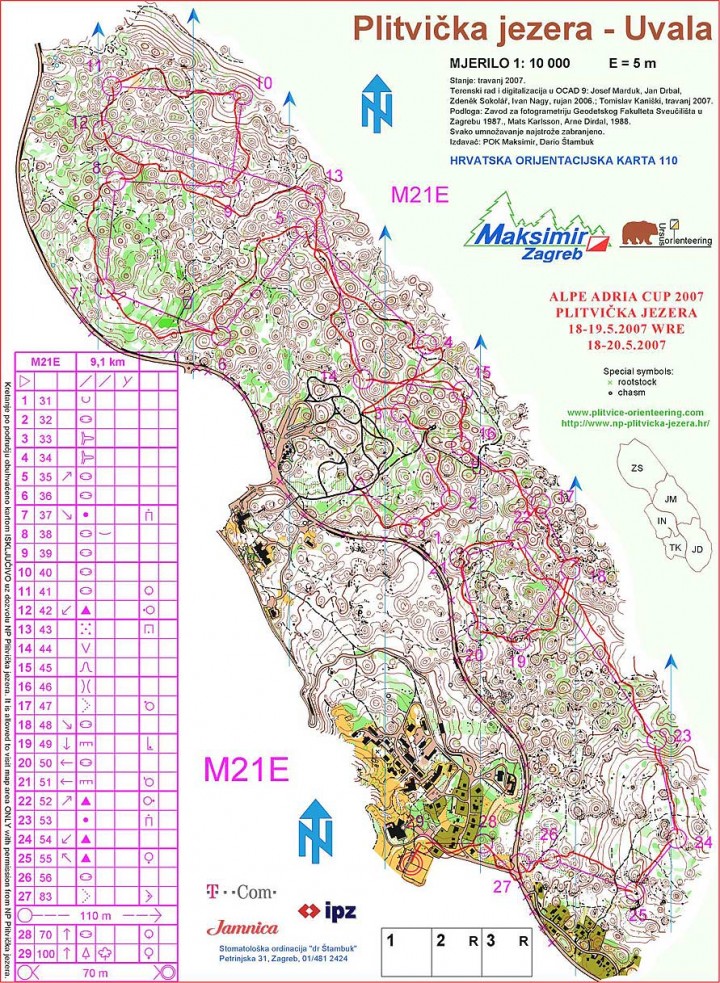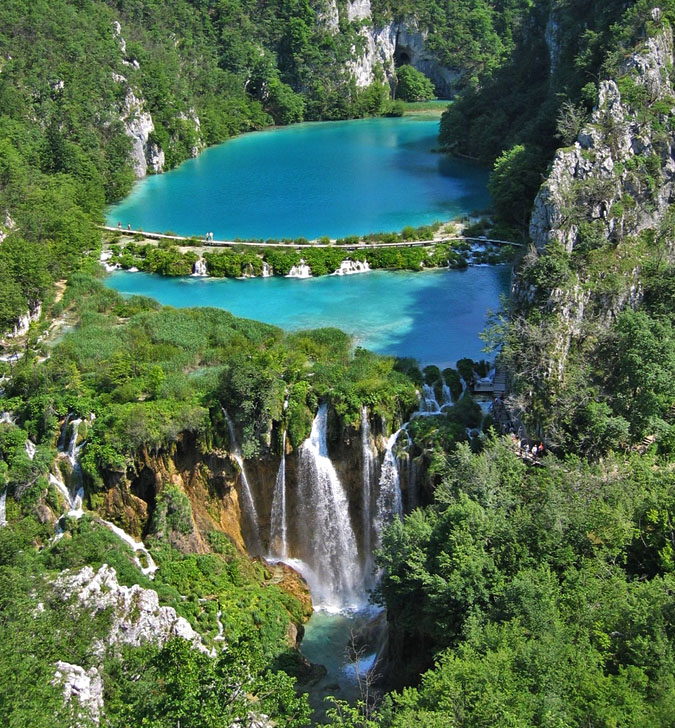Les Bouzigasses
Aveyron sounds like magic in the ears of many orienteers – the reason being the very special terrain which is both very runnable and very technical. The Aveyron terrain gives you a lot of navigational pleasure – if you manage to adjust your speed to the orienteering skills – and the open terrain with the big rocks give a special atmosphere.
The question is not if there will be an Aveyron map on the list of the 101 Orienteering Maps you should run on before you die, but rather which Aveyron map to choose. For now, our choice has landed on the map Les Bouzigasses, which was used for the Junior European Cup long distance in 2007 and for the 5th stage of French 6 Days in 2008.
The hardest technically
This was not an easy choice – we had to confer with the master of the Aveyron terrain and the King of Middle distance, Thierry Gueorgiou, to pick Les Bouzigasses: – There are many good maps in Aveyron – so it is difficult to choose only one of them, Gueorgiou responds when asked to pick a single one. When only one has to be chosen, Gueorgiou lands on either Le Patus or Les Bouzigasses. – Les Bouzigasses has a very nice part with narrow passages. Le Patus is special because the map contains several different types of terrain [Editors note: Le Patus was used for the 4th stage of the French 6 Days 2008]. In the end Les Bouzigasses was chosen for this article because of its very special north-western part. We invite you to discuss this choice in the comments below – we include links to several other Aveyron maps below in the Discussion section so that you can make up your own mind. One of the competitors wrote the following on his training log after the race on Les Bouzigasses during French 6 Days 2008: – The hardest technically so far, and I ran too fast, making too many mistakes. I ended up running almost 4km further than needed. Interestingly, my HRavg was the lowest it’s been for a long time in an orienteering race.
Photo by Sergesal, CC-ASA License
Unique terrain
When Gueorgiou says that he has not met more difficult terrains, that tells a lot about the Aveyron terrain. – The terrain is quite unique as there are a LOT of details and even if the terrain is open and very runnable, the visibilty is in most of places not that good because of the big rocks and small bushes. I haven’t met more difficult terrains, because you can really run fast because the ground is nice, but you are limited by your orienteering skills.
…it is definitively a challenge to rise your head from the map and look ahead
Actually, Gueorgiou has just spent several days training in the Aveyron area along with Anders Nordberg and Kiril Nikolov (you find many of the maps from their trainings here)
How to navigate in Aveyron
In case you ever end up in Aveyron on an orienteering map (which you definitely should), here are Gueorgious tips for navigation in Aveyron. – My best advice for this terrain is to have a good plan for the whole leg, because you will loose lot of time if you get stuck in the bushes. So, it might be clever to run longer to avoid very detailed areas and dense vegetation. As always in very detailed terrain, Gueorgiou advices you to use his “Full speed – no mistake” technique – in which you use the visibility of details that stick out in the terrain to maintain full speed all the way. – It is also clever to look as far as possible to try to catch some nice and visible features like single trees or big rocks. But it is definitively a challenge to rise your head from the map and look ahead, because you are already struggling to know where you are NOW. So it is even more difficult to know where you will be in 2-300 meters…
Why should you run on this map before you die?
So why did we choose this map as a candidate for 101 maps you should run on before you die? The navigational pleasure you get from orienteering in this terrain is certainly one important reason. Thierry Gueorgiou put it this way: - This terrain has to be in the list, simply because if it is not in the list, no other terrain can enter in the “101 Orienteering maps you should run on before you die”… (Article continues below the map)
| Map: | Les Bouzigasses |
|---|---|
| Scale: | 1: 5000 |
| Equidistance: | 5m |
| Year: | 2008 |
| Size of map: | cca. 3.4km2 |
| Mappers: | ARCANIS ANGHEL Marius, COTIRTA Marian, ROSCA Dinisle |
| Terrain type: | Calcareous plateau composed of many rocks. Semi-open vegetation (of the type found on limestone plateaus). Fairly high race speed, although some areas of great technicality oblige to slow down a lot (areas of micro-reliefs, high density of rocks). The terrain can be described as a Labyrinthique zone with reduced visibility. |
| Estimated top speed: | 6 min/km |
| Interesting points: | Thierry Gueorgiou says he hasn’t met more difficult terrains. |
| Links of interest: | CDCO12 (the owning club), Les Bouzigasses full map JEC 2007, Les Bouzigasses full map French 6 Days 2008 |
| Events on map: | JEC 2007, Aveyron 6 Days 2008 |
| Country: | France |
| Location: |
Discussion
Please note that the map being presented in this article does not necessarily mean that it will also be included in the final selection of the 101 maps – and in the paper book. It only means it is currently on our candidate list.
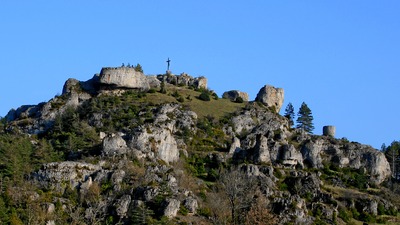
The big hill by Le Caylar. Photo: Thierry Gueorgiou
As noted above, while the choice of Aveyron was obvious, the choice of Les Bouzigasses was not an easy one. Here are the maps which we have considered:
- Les Bouzigasses. See also sample 2, sample 3, sample 4 from Nikolov/Gueorgiou/Nordberg training January 2010 and the map Plo de las Conquas (sample 2, sample 3) which overlaps Les Bouzigasses to the east.
- Le Patus – and Roc de Louradou which is a part of Le Patus. See also sample 2, sample 3 from N/G/N training 2010 and sample 4 from N/G/N training 2010 entitled “Kiril meets the myth”.
- Roc Acro. This map is quite famous as it was the first one mapped in the area – by Czech mapmakers in 1994 – and it was also one of our main alternatives to Les Bouzigasses. See also map sample from an interesting N/G/N training January 2010 on Roc Acro. Also around Le Caylar are Roc and Roc and Les Rives et Le Caylar.
- Tour des Aiguillons (see also sample 2) and La Salvetat
- Maps around La Couvertoirade which were used for the French 5 Days in 2005: Potensac Sud, Le Mont Merdous, La Libertade, Le Parpaillou, St Eulalie de Cernon.
Did we choose the most fitting map from the Aveyron region? Are there other interesting maps from the Aveyron region that we missed? Have you ever run on these maps? Please let us know in the comments below. We would also like to know if you know about other areas in the world with comparable terrain to Aveyron. As far as we know, there are terrains in Portugal/Spain with some similar characteristics – and even this map from Kazakhstan seems to have something in common with Aveyron.

